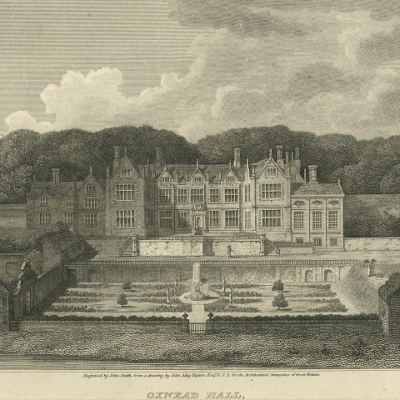The Paston family

The Pastons, who owned the treasures and commissioned the painting, lived mainly at Oxnead Hall, near Norwich. This family had grown in wealth and importance from the medieval period onwards until, by the early 17th century, they were one of the richest in the region.
Only one wing of Oxnead Hall survives today. This print shows architect John Adey Repton's impressions of the Hall in the early 19th century, recreated from ruins visible at that time. It is the best image we have of how the Hall would have looked in the Pastons' day.
The watercolour depicts the tomb of Clement Paston (1515/23-1598) in St Michael's Church, Oxnead. He made his fortune as a soldier and a sailor, capturing rich foreign ships and ransoming important hostages. Clement built Oxnead Hall and probably began the family art collection.
Clement's descendant, William Paston (1610-1663), a great traveller and collector, added new buildings to Oxnead. William is likely to have been the one who bought most of the items shown in the painting, on his travels in Europe and north Africa.
Robert Paston (1631-1682) was William's son. He was a politician, and also practised alchemy. Robert tried unsuccessfully for twenty years to create a version of the legendary Philosopher's Stone, which would turn base metals to gold, and cure all ills.
It is not known whether William or Robert Paston commissioned 'The Paston Treasure'. It is likely that William initiated the commission but died before it was finished, and Robert oversaw its completion. There are alchemical references in the picture, suggesting Robert's influence.
Norwich Castle Museum and Art Gallery made this community film about the Paston Family and their treasures:







